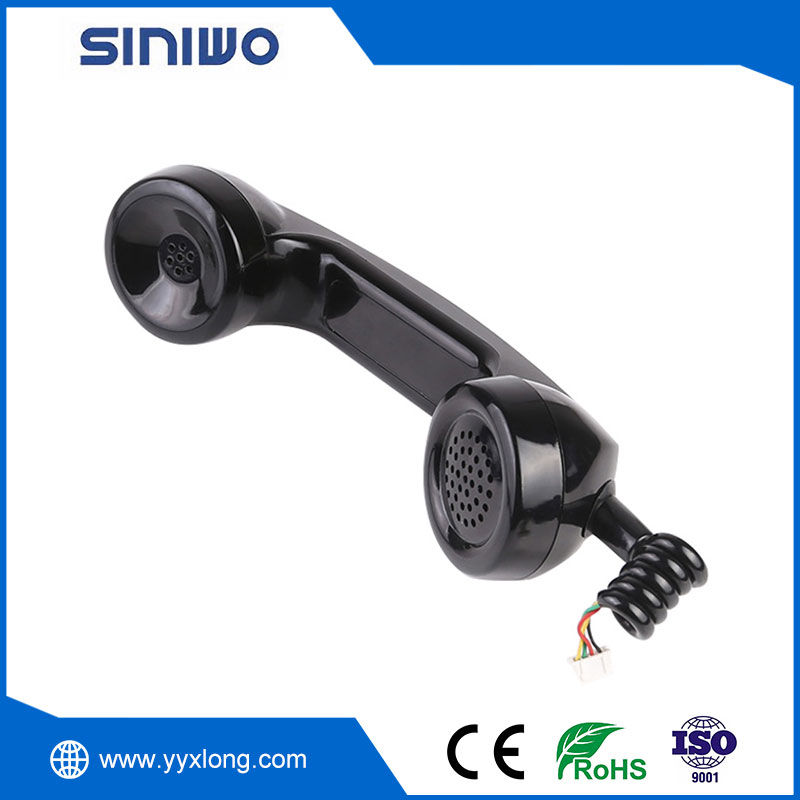Clear Communication in Any Condition: How Weatherproof Telephone Handsets Maintain Audio Quality
2024-06-12
In environments where exposure to harsh elements is inevitable, maintaining clear and reliable communication is crucial. Weatherproof telephone handsets are designed not only to withstand extreme weather, dust, and temperature variations but also to ensure that audio quality remains uncompromised. Here’s a closer look at the technologies and design strategies that make this possible.
Advanced Acoustic Engineering
1. Noise-Canceling Microphones
Weatherproof telephone handsets often incorporate noise-canceling microphones that filter out ambient noise. These microphones use advanced algorithms to differentiate between the speaker’s voice and background noise, ensuring that the person on the other end of the line hears a clear, undisturbed conversation. This technology is particularly effective in industrial environments where machinery and other background noises are prevalent.
2. Directional Microphones
Another technique used is the integration of directional microphones, which are designed to pick up sound from a specific direction while minimizing sounds from other directions. This focused pickup pattern enhances voice clarity by reducing the intrusion of environmental noise.
Protective Barriers and Seals
1. Acoustic Mesh
Weatherproof telephone handsets are equipped with acoustic mesh over the microphone and speaker openings. This mesh is designed to be permeable to sound waves but impermeable to water and dust. The acoustic mesh ensures that rain and dust do not clog or damage the audio components, maintaining clear sound transmission.
2. Water-Resistant Speaker Cones
Speakers in weatherproof handsets are often constructed with water-resistant materials. These speaker cones can repel water, preventing moisture from distorting sound quality or causing long-term damage. The materials used are also designed to endure temperature extremes without losing their acoustic properties.
Robust Construction Techniques
1. Sealed Enclosures
The enclosures of weatherproof handsets are meticulously sealed to prevent the ingress of water and dust. This sealing is achieved using gaskets and rubber seals that fit tightly around the openings and joints of the handset. By keeping the internal components dry and clean, these seals help maintain consistent audio performance.
2. Vibration Dampening
In environments with heavy machinery, vibrations can interfere with audio quality. Weatherproof handsets incorporate vibration-dampening materials and mounting techniques to minimize the transmission of vibrations to the microphone and speaker. This ensures that the audio remains clear and intelligible even in high-vibration settings.
Temperature Resilience
1. Temperature-Resistant Materials
Components within weatherproof handsets are made from materials that can withstand extreme temperatures without degrading. For instance, certain plastics and rubbers used in the handset can endure both high heat and freezing conditions, ensuring the handset functions correctly regardless of the temperature.
2. Thermal Insulation
Some weatherproof handsets are designed with thermal insulation to protect sensitive electronic components from temperature fluctuations. This insulation helps maintain a stable internal environment, preventing thermal expansion and contraction that could affect audio quality.
Innovative Audio Technologies
1. Digital Signal Processing (DSP)
Modern weatherproof handsets utilize digital signal processing to enhance audio quality. DSP technology can filter out unwanted noise, enhance voice clarity, and adjust audio levels in real-time, ensuring optimal sound quality under varying environmental conditions.
2. Automatic Gain Control (AGC)
Automatic gain control is a feature that adjusts the microphone sensitivity based on the ambient noise levels. In quieter environments, AGC increases the microphone sensitivity to pick up softer sounds, while in noisier environments, it reduces sensitivity to prevent distortion. This automatic adjustment helps maintain consistent audio clarity.
Conclusion: Engineering Excellence for Clear Communication
Maintaining clear audio quality in weatherproof telephone handsets requires a combination of advanced technology, robust materials, and precise engineering. By integrating noise-canceling and directional microphones, protective acoustic barriers, sealed enclosures, vibration dampening, temperature-resistant materials, and sophisticated audio technologies like DSP and AGC, these handsets ensure that communication remains clear and reliable, regardless of environmental challenges.
Whether deployed in industrial facilities, outdoor public areas, or harsh marine environments, weatherproof telephone handsets exemplify the ingenuity and resilience needed to keep conversations crystal clear, no matter the conditions.



